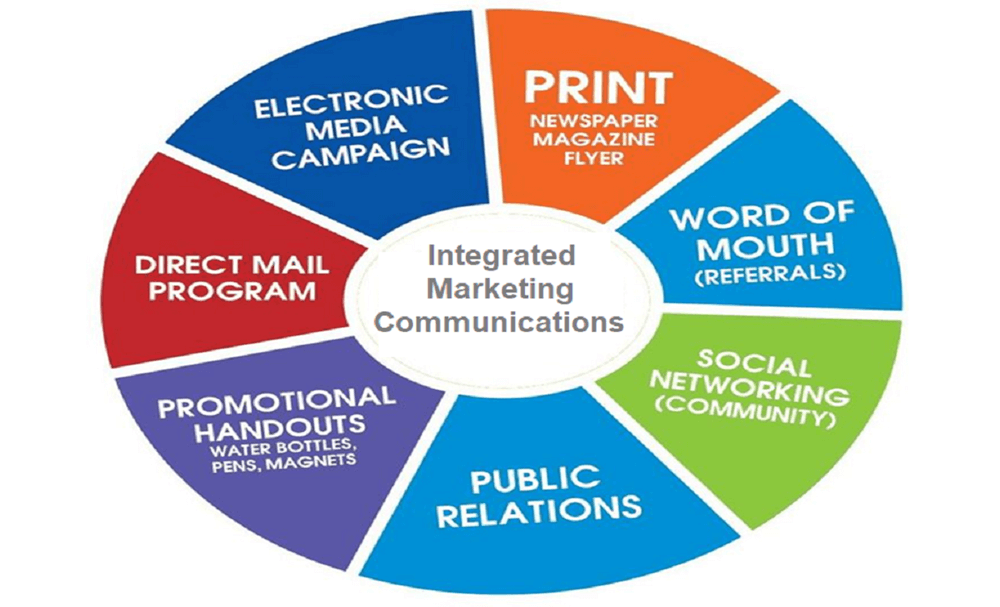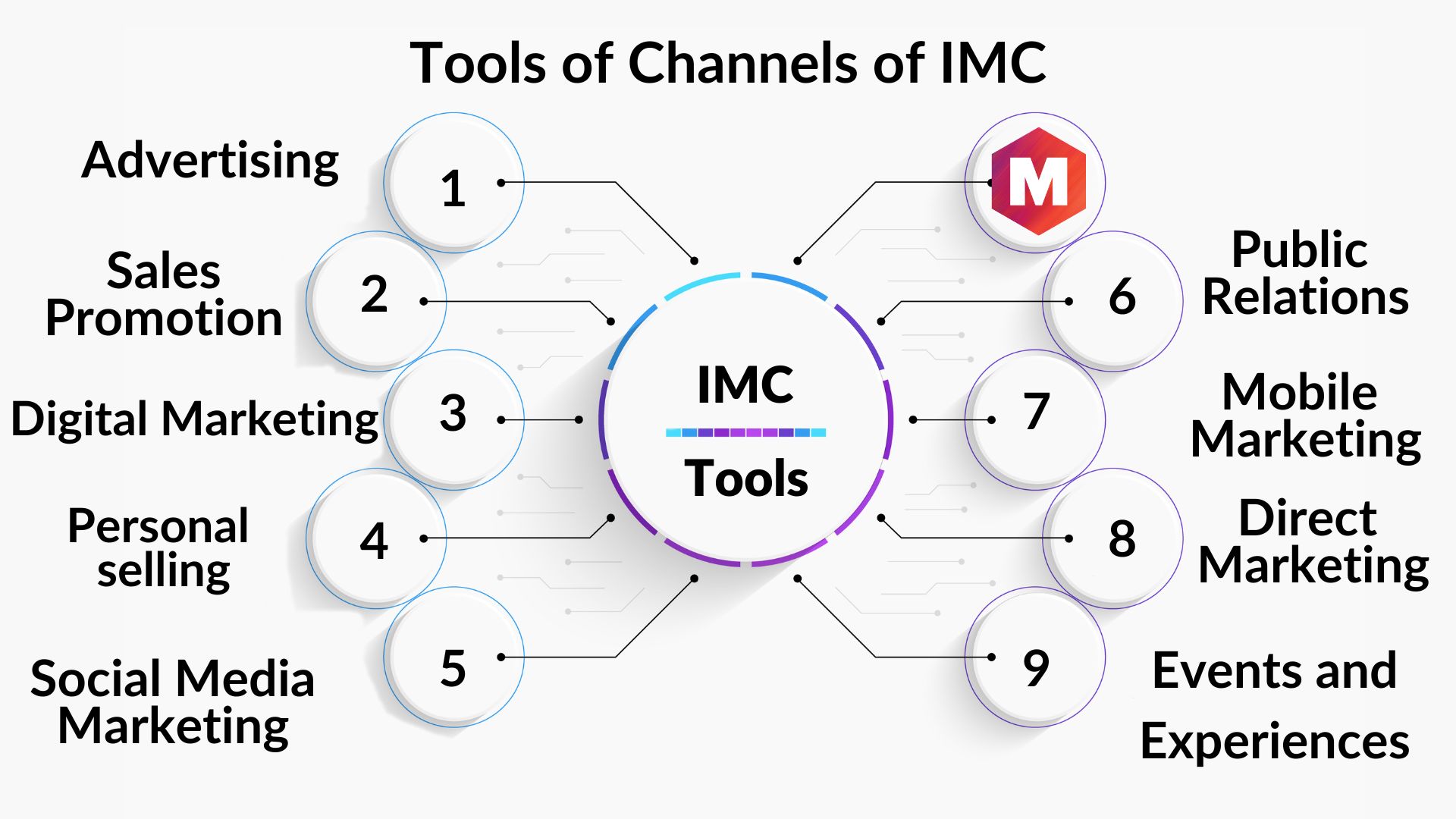Unlocking the Power of Integrated Marketing Communications: Strategies for Effective Messaging

In today's dynamic and interconnected marketplace, brands must adopt a holistic approach to communication to effectively engage with their target audience. Integrated Marketing Communications (IMC) emerges as a strategic framework that seamlessly combines various marketing channels and tactics to deliver consistent and impactful messages to consumers. In this comprehensive guide, we will delve into the essence of IMC, explore the compelling need for its adoption, and uncover the diverse channels through which IMC strategies can be executed.
Part 1: Understanding Integrated Marketing Communications
1.1 Definition of IMC:
- Integrated Marketing Communications (IMC) refers to the strategic coordination and integration of various marketing communication tools and channels to deliver a unified and consistent message to target audiences.
- IMC seeks to align all elements of marketing communication, including advertising, public relations, direct marketing, sales promotion, digital marketing, and social media, to create synergy and maximize impact.
1.2 Importance of IMC:
- Consistency: IMC ensures that all marketing communications across different channels convey a consistent brand message, voice, and identity, thereby enhancing brand recognition and recall.
- Efficiency: By integrating various communication channels, IMC allows for the optimal allocation of resources and budget, maximizing the effectiveness of marketing campaigns.
- Customer-Centricity: IMC enables brands to deliver relevant and personalized messages to target audiences, fostering deeper engagement and relationships with customers.
Part 2: Need for Integrated Marketing Communications
2.1 Fragmentation of Media Landscape:
- With the proliferation of digital channels and platforms, consumers are exposed to a multitude of messages from various sources, leading to information overload and fragmented attention spans.
- IMC helps brands cut through the clutter by delivering cohesive and coordinated messages across different touchpoints, ensuring maximum impact and engagement.
2.2 Customer Empowerment:
- Today's consumers are more informed, discerning, and empowered than ever before, thanks to easy access to information and social media platforms.
- IMC enables brands to engage with customers on their terms, across multiple channels and devices, and deliver relevant and personalized messages that resonate with their needs and preferences.
Part 3: Channels of Integrated Marketing Communications

3.1 Advertising:
- Traditional advertising channels such as television, radio, print, and outdoor advertising play a crucial role in reaching mass audiences and building brand awareness.
- Digital advertising channels, including display ads, search engine marketing (SEM), social media advertising, and influencer marketing, offer targeted and measurable ways to engage with specific audience segments.
3.2 Public Relations (PR):
- PR activities, such as media relations, press releases, events, and sponsorships, help enhance brand credibility, reputation, and visibility in the eyes of the public and the media.
- Online PR efforts, including media outreach, social media monitoring, and crisis management, allow brands to actively manage their online presence and reputation.
3.3 Direct Marketing:
- Direct marketing tactics, such as email marketing, direct mail, telemarketing, and SMS marketing, enable brands to communicate directly with individual customers or prospects.
- Personalized and targeted direct marketing campaigns can drive customer engagement, loyalty, and conversions, leading to measurable results and ROI.
3.4 Digital Marketing:
- Digital marketing encompasses a wide range of online channels and tactics, including website optimization, content marketing, social media marketing, email marketing, search engine optimization (SEO), and paid advertising.
- Integrated digital marketing strategies leverage the strengths of each channel to create cohesive customer journeys and experiences, from awareness to conversion and retention.
Conclusion:
Integrated Marketing Communications (IMC) represents a strategic imperative for brands seeking to cut through the clutter, engage with empowered consumers, and drive meaningful business outcomes. By aligning and integrating various marketing channels and tactics, IMC enables brands to deliver consistent, relevant, and impactful messages that resonate with their target audiences across multiple touchpoints. Embracing IMC not only enhances brand visibility, credibility, and customer engagement but also drives long-term relationships and loyalty in today's interconnected marketplace.
Strategies for Effective Messaging
Effective messaging is essential for capturing the attention of your target audience, conveying your brand's value proposition, and driving desired actions. Here are some strategies for crafting compelling and impactful messages:
1. Know Your Audience:
- Understand the demographics, preferences, needs, and pain points of your target audience.
- Use market research, customer feedback, and data analytics to gain insights into their motivations and behaviors.
2. Define Clear Objectives:
- Determine the specific goals and objectives of your messaging, whether it's raising brand awareness, promoting a new product, or driving conversions.
- Ensure that your messaging aligns with your overall marketing strategy and business objectives.
3. Craft a Compelling Value Proposition:
- Clearly communicate the unique value and benefits that your product or service offers to your target audience.
- Highlight what sets your brand apart from competitors and why customers should choose you.
4. Tailor Messages to Different Segments:
- Segment your audience based on demographics, psychographics, or buying behaviors.
- Customize your messaging to resonate with the specific needs, interests, and preferences of each segment.
5. Use Emotional Appeal:
- Tap into emotions such as joy, fear, excitement, or nostalgia to create a connection with your audience.
- Craft stories and narratives that evoke emotional responses and resonate with your audience on a personal level.
6. Keep it Clear and Concise:
- Use clear, concise language that is easy to understand and memorable.
- Avoid jargon, technical terms, or overly complicated language that may confuse or alienate your audience.
7. Use Visuals to Enhance Impact:
- Incorporate compelling visuals, such as images, videos, infographics, or GIFs, to capture attention and convey your message more effectively.
- Ensure that visuals are aligned with your brand identity and messaging.
8. Maintain Consistency Across Channels:
- Ensure consistency in messaging across all marketing channels, including your website, social media, email campaigns, advertising, and offline materials.
- Consistent messaging helps reinforce brand identity and builds trust with your audience.
9. Include a Call to Action (CTA):
- Clearly state the desired action you want your audience to take, whether it's making a purchase, signing up for a newsletter, or requesting more information.
- Make the CTA compelling, actionable, and easy to follow.
10. Test and Iterate:
- Continuously test different messaging strategies, headlines, copy variations, and visuals to identify what resonates best with your audience.
- Use A/B testing, focus groups, or surveys to gather feedback and insights, and iterate based on results.
By implementing these strategies, you can create messaging that captivates your audience, communicates your brand's value proposition effectively, and drives desired actions, ultimately leading to greater engagement, loyalty, and conversions.
Comments
Post a Comment